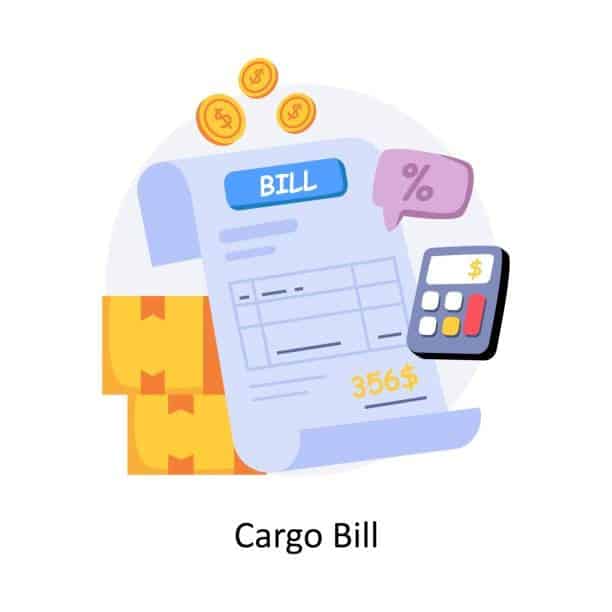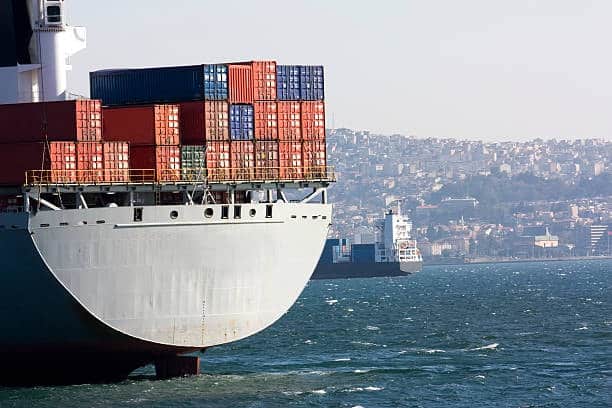Understanding When is Bill of Lading Issued
Within the 2017 New South Wales District Court judgment a master bill lading document exists as this document known as a Bill of Lading (BOL) which serves as the definitive bill of lading provided by the shipping company .
“A lading issued document. The signature requirement applies to the carrier by sea alongside its authorized representatives to acknowledge receipt issued of shipped good . Three standard elements of a bill of lading consist of (a) serving as an acknowledgment for carrier-received or shipped goods and (b) functioning as title paperwork for these goods while (c) incorporating or documenting the maritime shipping deal concerning these possessions. A document qualifies as a bill of lading when it contains all these elements yet the absence of any characteristic would make it difficult to classify it as such.

The carrier who handles cargo releases BILLS OF LADING as cargo receipts and commercial proof to their shippers who own them. This legal document acts as proof of receipt for the shipper. The cargo description provides baseline information which specifies what items are contained in the shipment along with weight measurements and final delivery point.
The document acknowledges the Bill of Lading as a legally binding document that provides both security for insurance purposes and operational efficiency together with compliance, highlighting its main functions . Through this document, shippers obtain proof regarding delivery contracts as well as shipping demands and export documentation of the document issued for goods receipt during transport.

The transportation company prepares an ocean bill of Lading for exporting goods, such as Australian wine exports through a shipping line to U.S. retailers, which includes specific information about consignment items together with shipping details of both parties, the purchase order, and destination harbor. The document grants ownership rights to the retailer upon shipment delivery thus ensuring clear trade operations and security.
The Financial and Legal Importance of the Bill of Lading documents

The Bill of Lading operates as a legal financial tool with multiple functions beyond its core purpose in document movement operations. One type of electronic bills known as an electronic bill of lading named endorsed order system functions as financial backing to obtain loans thus serves as a valuable resource for financing arrangements. Businesses can obtain financing through a freight forwarder and trade finance activities by using Negotiable Bills of Lading to access funding during product movement.
An NBL operates as a financing tool when used as collateral to obtain short-term loans for securing funds. The NBL acts as collateral when endorsed so companies can obtain money from institutions and financiers to secure funds through their cargo in movement. During international trade businesses can sustain their financial operations by using NBLs as security to access funds so they do not need to wait for payments from buyers. Shipment endorsement enables businesses to use their consignment as financial collateral for more efficient company operations with enhanced working capital management flexibility.
Leveraging Negotiable Bills of Lading (NBLs) for Financial Flexibility and Operational Efficiency

Grants funding accessibility through the Negotiable Bill of Lading (NBL) which sustains financial fluidity for organizations that participate in international commerce. Financial institutions will offer loans to companies through using the NBL as collateral thus enabling them to operate while waiting for their buyer’s payments. Businesses can support their operations through their expenditures for inventory expansion or growth investments even as their shipping goods move through transportation because of this special financing arrangement. Keeping the NBL as a financial instrument means businesses in fast-paced industries can benefit from its ability to generate flexibility for crucial cash flow management needs.
Available funds through NBLs build stronger bonds between companies and their bank institutions and trade financiers and logistics providers who support a stronger overall financial framework. Companies can optimize their supply chain management together with reduced payment cycle pressure because they can use assets in transit as collateral. Businesses that implement NBLs into their financing methods achieve better competitiveness while managing money flow better and executing international trade procedures efficiently.
Types of Bill of Lading Used in Logistics

The misconception exists that two documents like bills of lading must be used in ocean freight only but they remain applicable for different shipping modes, making lading important in various transportation scenario . The shipping documentation depends on transportation methods and delivery specifications through the following options:
- A shipper can use the Order Bill of Lading system for sending goods before the payment arrives.
- The clean BOL indicates that cargo receipt arrived without any legal loss or material damage.
- The consignee cannot take possession of shipment until Straight Bill of Lading (Consignment BOL) indicates delivery authorization.
- Freight forwarders use House Bill of Lading as a contract which shows receipt receive payment
of shipping materials. - The Ocean Bill of Lading serves both as documentation for receipt of goods and invoice for shipments handled through maritime transportation.
- This type of bill of lading serves shipments which employ several different transportation methods.
- Received for Shipment Bills serve to verify authorized representative
that goods have been taken for transport from the moment shipment commences. - A Claused (Dirty) Bill of Lading points out visible damage to products along with any installation or cataloging issues present in shipped items.
- A Surrender Bill of Lading serves as a negotiable BOL because it enables importers to acquire goods through presenting the document for surrender.
- A digitized version called Electronic Bill of Lading (eB/L) possesses legal equivalence to paper Bill of Lading.
Expertise in Bill of Lading vs. Sea Waybill

You may find the Sea Waybill as an alternate document while using shipping services. A Sea Waybill functions differently from a Bill of Lading as it lacks negotiability and fails to function as a document of title, thereby not providing lawful transfer of ownership . The document functions primarily for prestituted trading relationships among the parties involved with the cargo since it lacks conveyance abilities to third parties.
A Sea Waybill functions better than a Bill of Lading because it serves shipping operations where ownership change of goods is unnecessary during transportation. The Sea Waybill serves shippers doing business with known parties by remaining a simplified document because goods transfer through endorsement is unnecessary. A Sea Waybill serves as evidence for the contract of carriage together with acting as proof of receipt for cargo shipments but it lacks needed functionality when goods need to be transferred to additional stakeholders during transit. The Sea Waybill serves most transactions between buyers and sellers who maintain established relationships of trust.
A Sea Waybill serves simple transfers between experienced parties but falls short of the flexible features that Bill of Lading provides. As a non-negotiable instrument the Sea Waybill lacks the capability to obtain financing and perform legal transfer of cargo ownership to outside parties. A Sea Waybill establishes the goods receipt as well as serving as contractual evidence between the shipper and carrier. The Sea Waybill serves such transactions that involve parties who understand each other and whose accepted terms of shipment do not benefit from the additional security layers that a Bill of Lading would offer.
Why Prioritizes the Straight Bill of Lading in Global Shipping line

A Bill of Lading serves as the essential basis which makes shipping operations secure while ensuring transparency among shipping lines . This contractual receipt protects the interests of every shipping party including the sender and delivery recipient and the transportation provider, especially in cases where a house bill has been issued . A Bill of Lading requires all the details of a complete description of actual goods and precise details of the shipment due to error possibilities that result in legal problems and financial penalties.
A freight bill concentrates solely on transportation expenses since it lists the costs associated with moving goods throughout their transit route. A freight bill excludes details about the cargo through its examination process since this information appears in different shipping documents like inland bills. The freight bill focuses on transportation logistics exclusively to create a financial record of the carrier’s services despite independent costs present in invoices for products and taxes and fees.

All lading documents from require signatures from shippers as well as carriers and recipients, with the carrier stating before shipping begins. An actual original bill of Lading provides legal protection in cases of disagreements and situations requiring insurance payment, and facilitates the transfer ownership of goods . When a buyer claims nondelivery of goods, a signed Bill of Lading stands as incontrovertible proof, ensuring that only the consignee can assert such claims, safeguarding businesses from monetary losses together with adverse reputation impact.
Legal Compliance and Documentation Best Practices

The documentation standards requires Bill of Lading storage for at least five years according to legal mandates. The export documents include the house bill, where the original inland bill remains with carriers and the freight forwarder until they get payment, which is essential for the transportation company. , thus preventing non-payment risks and ensuring secure financial transactions.
The best compliance standards stem from these practices emphasizing how lading and other documents, including the document issued, shipment bill, and order bills , are important in shipping operations:
- A methodical Bill of Lading review process exists to eliminate mistakes from involving misrepresentation or legal disputes.
- Our company works with legal specialists for complete compliance with international shipping regulations.
- Our freight forwarding specialists both handle and verify all Bills of Lading through professional management procedures which ensure complete security during acknowledge receipt
transactions.
Conclusion

gives priority to the Bill of Lading which extends beyond paperwork because it functions freight forwarder as a legal instrument for maintaining transparency while supporting security and operational excellence within worldwide shipping. Businesses rely on the Bill of Lading for fundamental protection against all types of fraud as well as disputes and financial risks through its three main purposes: contract, receipt, and when a document is issued for shipping, thereby facilitating international trade.
Through freight forwarding expertise, businesses acquire optimized shipping procedures, including determining the loading port, while ensuring that the carrier delivers efficiently and together with asset protection alongside regulatory compliance for worldwide trade operations.Freight forwarders maintain a vital position in choosing ideal shipping procedures because they combine cost analysis with delivery timelines and customs obligations. The service of freight forwarders includes proper documentation preparation for international compliance alongside submission of this paperwork to prevent delivery delays or fines.




